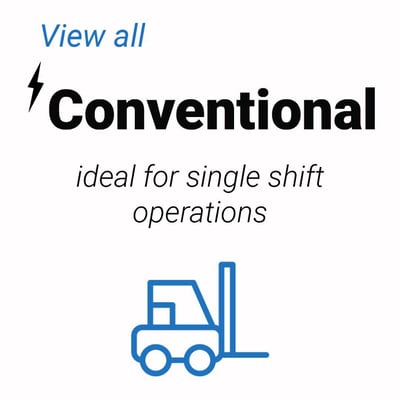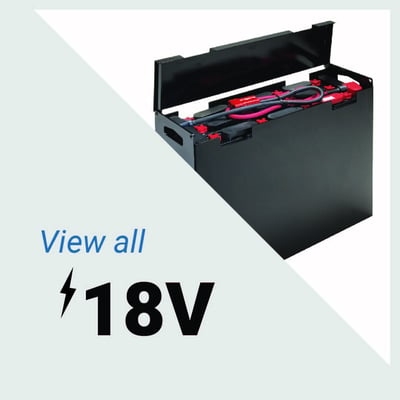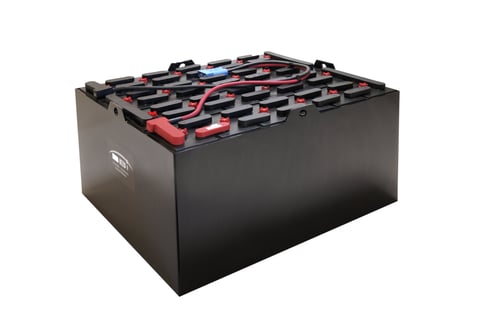
Understanding Industrial Batteries Capacity Ratings
When you're navigating the world of industrial batteries, particularly for applications like forklift batteries, understanding capacity ratings is crucial. Not only do these ratings affect performance and efficiency, but they also influence operational costs and maintenance schedules. In this article, we’ll dive deep into the intricacies of industrial battery capacity ratings, providing you with a comprehensive guide to help you make informed decisions.
What Are Industrial Batteries Capacity Ratings?
Industrial battery capacity ratings are specifications that indicate how much energy a battery can store and deliver over time. They are typically measured in ampere-hours (Ah) or kilowatt-hours (kWh). These metrics help in determining how long a battery can power a device before it needs recharging.

Understanding Ampere-Hours vs. Kilowatt-Hours
Ampere-Hours (Ah): This rating signifies the amount of current a battery can provide over an hour. For instance, a 100 Ah battery can deliver 100 amps for one hour or 50 amps for two hours.
Kilowatt-Hours (kWh): This metric combines voltage and ampere-hours to provide a more comprehensive view of energy capacity. A battery rated at 10 kWh can deliver 10 kilowatts for one hour or various combinations of power and time that equal 10 kWh.
Why Do These Ratings Matter?
Understanding these capacity ratings is vital when selecting the right forklift batteries for your operation. Poorly chosen batteries can lead to inefficiencies, increased downtime, and even safety hazards.
Factors Influencing Battery Capacity Ratings
The capacity ratings of industrial batteries are not static; they depend on several factors:
- Temperature: Battery performance can degrade significantly in extreme temperatures.
- Discharge Rate: The rate at which energy is drawn affects how much energy the battery can effectively supply.
- Battery Age: Over time, all batteries lose some capacity due to chemical degradation.
- Maintenance Practices: Regular upkeep ensures optimal performance and longevity.
So, how do you ensure you’re getting the most out of your batteries? Regular maintenance checks and careful monitoring of discharge rates are essential practices.
Decoding Industrial Battery Specifications
When you're looking at specifications 80 volt flat plate forklift batteries for forklift batteries or other industrial applications, it’s essential 36 volt flat plate forklift batteries to decode what those numbers mean. Let’s break down some common specifications you might encounter:

Voltage Rating
The voltage rating indicates the electrical potential difference provided by the battery. Common voltages for forklift batteries include 6V, 12V, and 48V. When choosing a battery, ensure it matches your equipment's requirements.

Capacity Rating
As previously discussed, this rating tells you how much energy the battery can store. It’s important to consider both Ah and kWh ratings when evaluating options.
| Specification | Meaning | |------------------|----------------------------------| | Voltage | Electrical potential difference | | Ampere-Hours | Total current capacity | | Kilowatt-Hours | Total energy output capability |
Cycle Life
This aspect refers to how many complete charge-discharge cycles a battery can endure before its performance drops below acceptable levels. A higher cycle life means lower replacement costs over time.
Self-Discharge Rate
Every battery naturally loses a bit of its charge when not in use—this is known as self-discharge. A lower self-discharge rate is preferable as it means better retention of stored energy during idle times.
In summary, being able to interpret these specifications allows for better decision-making regarding which forklift batteries will meet your operational demands best.
Common FAQs on Industrial Batteries Capacity Ratings
What does Ah mean when referring to industrial batteries?
Ampere-hours (Ah) measures the total current a battery can supply over one hour. It directly indicates how long a device can run before requiring a recharge.
How does temperature affect battery performance?
Extreme temperatures can significantly reduce both performance and lifespan by affecting chemical reactions within the battery cells.
What’s the typical lifespan of an industrial forklift battery?
Most industrial forklift batteries have a lifespan ranging from five to seven years with proper maintenance practices in place.
How often should I check my forklift batteries?
Regular inspections should occur at least once every month or more frequently if they're used under heavy loads or extreme conditions.
Can I mix different brands or types of forklift batteries?
Mixing different brands or types isn’t recommended as it may lead to imbalances in charging and discharging rates, potentially harming overall performance.
What are some signs that my forklift battery needs replacement?
Signs may include reduced runtime, excessive heat during charging, swelling casing, or visible leaks around terminals.
Conclusion: Making Informed Choices with Battery Capacity Ratings
Understanding industrial batteries' capacity ratings is not just about numbers; it's about making informed decisions that impact your operations' efficiency and safety. Whether you're opting for new forklift batteries or assessing your current fleet's performance, being knowledgeable about these ratings will empower you to choose wisely.
By considering factors such as ampere-hours versus kilowatt-hours, voltage requirements, cycle life expectations, and self-discharge rates—you're on your way to optimizing your operations while minimizing costs. Take control of your industrial energy needs today!